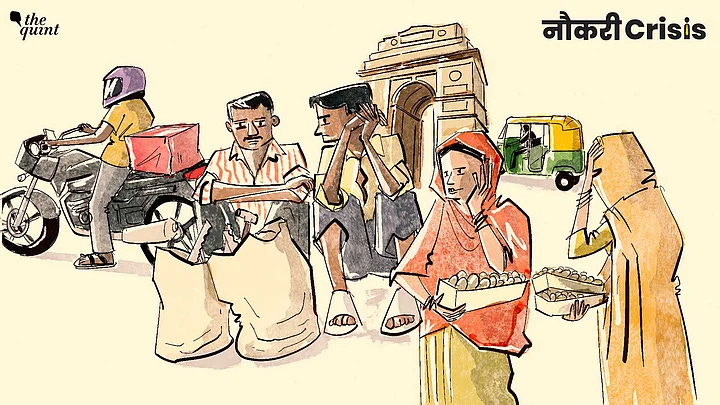The Question is... Has Delhi Really Beaten Unemployment?
Covering such stories requires deep data analysis. This can't happen without your support!
Dear Reader,
I am a Delhi voter and over the past month, I have been listening to the war of words between the Aam Aadmi Party (AAP), the Bharatiya Janata Party (BJP), and the Congress on issues like freebies, corruption, and even illegal immigrants.
But why is no party talking about jobs?
I decided to dig into this and this story is a result of it.
Delhi Paradox: Low Unemployment Rate But No Jobs for Women, Informal Workers?
If one goes by data, Delhi has performed better than other states. The unemployment rate has dropped sharply — from 6.3 percent in 2020-21, during the pandemic, to 2.1 percent in 2023-24.
Joblessness among youth (4.6 percent) is also much lower than the national average (10.2 percent).
So does that mean Delhi is an employment success story?
Not quite.
The problem is that government data does not adequately capture migrant workers and those engaged in unorganised and informal work, such as daily wagers, domestic workers, construction workers, those who are self-employed, and gig workers.
Over 42 percent of Delhi comprises migrants as per the 2011 Census. In fact, migration added twice as much to Delhi’s population than births in the year 2021. Now, 70 percent of these migrants are from Uttar Pradesh, Bihar, and Jharkhand — and this explains why the AAP and BJP keep sparring over Purvanchali voters.
But what about the job situation of migrant workers?
Informal workers employed in construction and domestic work told The Quint that they have neither received work nor any compensation in the last three months due to the construction ban to keep the spiralling air pollution in check. Despite registering on the e-Shram portal, they have yet not received any benefits.
Many workers say that they are still bearing the brunt of the Centre's policies such as demonetisation and GST, and that they will never forget how they had to walk hundreds of kilometres to their villages during the pandemic.
The question is, why are parties focusing on Purvanchali identity but not the actual livelihood of these migrant workers?
There's another section that has remained neglected in the so-called jobs success story — women. While the Labour Force Participation Rate among men is 54 percent, it is just 14.5 percent among women — though it still represents an increase from the past few years.
Given this data, isn't the promise of direct cash transfer to women by the AAP, BJP, and Congress an implicit acceptance that there haven’t been enough jobs for women?
Another worrisome trend is that the number of regular-salaried people is reducing while the proportion of self-employed and casual labour is increasing over the years.
This indicates an increasing informalisation of the economy. Over 60 percent of the workers are without job contracts, over 40 percent are not eligible for paid leave, and nearly 56 percent have been recruited without any social security benefits such as Provident Fund (PF), gratuity, healthcare, maternity leaves, etc.
So the question is, is Delhi indeed an employment success story?
Shouldn't the parties be speaking more about jobs and less about freebies?
You will find a lot more data and voices in our story.
This story is part of our 'Naukri Crisis' special project that investigates the job situation in India. Covering such stories requires on-ground reporting and deep data analysis. This can't happen without your support! Consider becoming a member* and help us bring you authentic, data-backed, independent journalism.
Thank you,
AAKRITI HANDA
Special Correspondent
Also Read:
*Already a member of The Quint? What a star! Your support helps us do what we do better.
Want us to cover a story? Write to us at editor@thequint.com or reply to this email.







